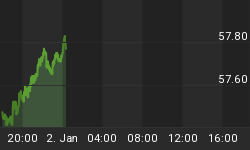Recently I have been seeing breathless articles surface in the popular press that the US is set to become an oil exporting nation by 2020 - Saudi America so to speak - and that WTI (West Texas Intermediate) will fall to $45/barrel and stay there. At the risk of disappointing people who are trying to find some good news to report there are a number of problems with these predictions.
On the first point even the always optimistic US Energy Information Administration (EIA) is not supportive, predicting US crude production to only reach around 7.5 million barrels per day in 2020 (up from around 6 million prior to tight oil fracking) and then declining thereafter to stabilize back around 6 million bopd - an impressive increase but hardly the 16-18 million bopd required to make the US an exporter.
On the second point simple math must play a part - surely it is the marginal cost of production that sets the price for any good. A considerable amount of the North American oil production base would be unprofitable at $45/barrel. Projects quickly get shut-in (especially the small wells which fracking produces and which represent the majority of the US production base) once they become loss making. Estimates are that fracked tight oil wells need $70-$80/barrel to generate a positive return on capital. In addition, according to Cambridge Energy Research Associates 15-20 million barrel/day of global production requires prices higher than $65/barrel just to break-even.
Therefore, when predicting sustained $45/barrel oil prices you are effectively saying one of two things 1) global demand drops by more than 20% or the marginal global cost of production drops by almost 50% - clearly neither of these two assumptions is impossible but surely they are implausible.
Certainly oil production is increasing in the US which when combined with the natural gas story will reduce the amount of US wealth that is shipped to oil exporting nations every day. But let's not forget that the US is still connected to the global oil market by 8 million barrels/day of imports today and even at the peak predicted by the EIA by around 6 million barrels/day. So despite some short-term infrastructure issues at Cushing and tight oil production increases, it is useful to remember that oil remains a global market and the US is not completely isolated from it or from its economic drivers and prices.
Regards,















